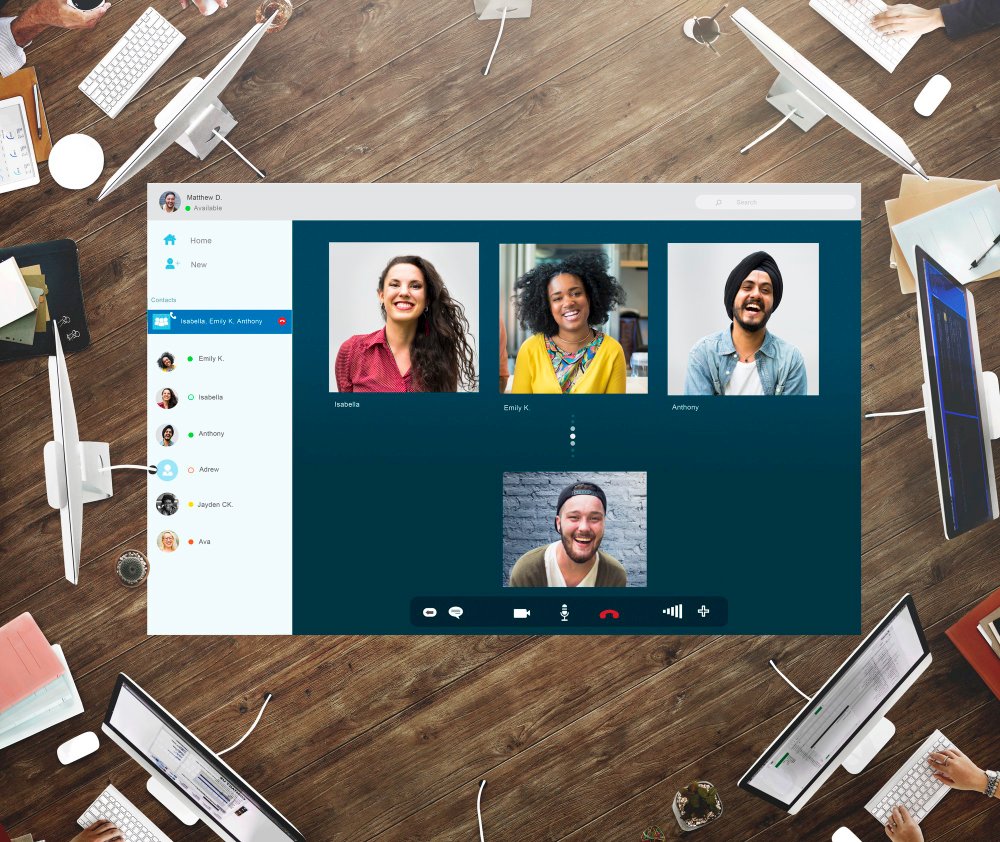Organizations often have to implement change if they want to stay current and competitive.
One of the most effective ways to communicate change is through the use of video. It is crucial to clearly plan internal video communication for all employees to understand the reasons for change, the benefits it will bring, and any potential risks or challenges. Good change management practices can help organizations avoid resistance to workplace change.
Using multiple channels is vital to ensure all employees across the organization get the message.
Involving employees in the change process can give them more of a sense of control over what’s happening. Organizations also need to monitor progress to ensure change is on track and achieving its goals.
Here are some types of organizational change and the best practices for communicating them:

Different types of organizational change
Organizational change refers to changes in the way an organization operates or conducts its business.
The following are some of the different types of organizational change:
- Structural change: This may involve creating new departments, merging or eliminating existing ones, or changing employee reporting relationships.
- Technological change: This refers to changes like implementing new software, hardware, or systems to increase efficiency, productivity, and innovation.
- Process change: This involves altering the way work is done in the organization. This could include introducing new processes, changing existing ones, or eliminating redundant ones.
- Cultural change involves altering the values, beliefs, and attitudes that govern the organization’s behavior. For example, an organization may want to create a more diverse or customer-focused culture.
- Strategic change: This involves making changes to the organization’s overall strategy, such as developing a new product line or focusing on a new market.
- Employee change: This involves changing the workforce in some way, such as hiring new employees, reducing staff, or changing job roles and responsibilities.
These different changes are often interconnected, and a change in one area usually has implications for other areas.
The use of video to communicate organizational change
Some common pitfalls of communicating change include a lack of employee engagement, poor cross-functional collaboration due to a lack of a central internal communication platform, and insufficient management support.
This is where using videos and hosting them on a private video hosting platform can make a difference.
Internal video communication is a highly effective way to communicate organizational change.
When hosting internal videos on a centralized platform, cross-departmental communication becomes easier. Senior executives and managers can communicate via video to explain why change is necessary. Team managers can create videos to show team members how to implement change. Video sharing helps to address questions employees may ask, like “What’s in it for me?” and “What does it mean to me?” Internal video communication provides a compelling and engaging way to convey complex information. Here are some types of videos organizations can use to communicate change.
- Explainer videos: In explainer videos, organizations can give an overview of a change, explain why it is necessary, and what it will mean for employees.
- Testimonial videos: Employees who have already experienced the impact of a change can use video sharing to show how it made their tasks easier, improved their productivity etc.
- Q&A videos: Q&A videos can answer common questions that employees may have about the changes. These videos can provide clarity and address any concerns employees may have.
- Training videos: Training videos can provide employees with the skills and knowledge they need to adapt to the change. They can provide step-by-step instructions on how to implement change in screen-sharing videos.
Overall, enterprise video provides a powerful tool for communicating changes. It can help to simplify complex information, create an emotional connection with employees, and provide a visual and engaging way to communicate important information about change.
Choosing the proper communication channels and tactics
When communicating organizational changes, it is important to use a variety of communication channels and tactics. This ensures that all stakeholders are fully aware of what’s happening and how a change will affect them personally.
- Emails, newsletters, memos etc., can inform employees about the changes. They are not the best form of communication as they are easy to ignore. This is why it’s essential to use more than just text-based communication.
- Organizations can post information on the intranet, including videos with FAQs and other resources.
- Holding a Town Hall Meeting can inform employees about the changes. Making it a virtual meeting ensures remote employees are also in the loop.
- Managers can conduct one-on-one conversations with employees to discuss the changes, and any implications for them and to answer any questions they may have. By using video conferencing software, they can communicate one-on-one with remote employees.
- Creating training videos can help employees adjust to change and learn any new skills they may need.
- Video messages from the CEO or other top executives can help to communicate the significance of the change.
- Surveys or feedback sessions can give employees a way to share their opinions and thoughts about a change.
- Employee-generated videos can give employees agency and prevent change from being ‘top-down.’ It doesn’t just come from the point of view of senior management but from those who are involved in implementing change.

Overcoming technical challenges and ensuring high-quality video production
There are certainly technical challenges that come with creating and distributing high-quality videos. Organizations need to consider what enterprise video needs to convey, the target audience, what type of video to use, and what equipment and resources are essential. Some of the most significant technical challenges are:
- Poor lighting and audio quality: Using natural lighting and knowing lighting techniques is essential to produce clear, quality videos. Poor audio quality can distract the viewer from the content and make it difficult to understand. It is important to use good microphones, soundproofing, and post-production editing to ensure high-quality audio.
- Poor quality camera equipment: This will result in poor quality footage that won’t engage viewers. Expensive equipment isn’t essential but factors like frame rate, resolution etc., impact video quality. Some smartphones are good enough to produce quality videos.
- Poor editing software: Editing is a critical part of the video production process. Without proper editing software, getting the best use of video assets is impossible. The use of the right editing software can enhance video quality by removing unwanted footage, adding interactive elements etc.
- Inadequate bandwidth and storage space: High-quality video files can take up bandwidth and storage space. Organizations must have a way to store and transfer large files quickly and efficiently to ensure smooth playback and timely delivery.
- A lack of video security measures: Video security is vital when sharing internal communication videos, such as change videos. Without the right security measures, sensitive information can get into the wrong hands.
How to develop a video communication strategy
Developing a video communication strategy involves the following:
Defining objectives: Organizations must define the objectives they want to achieve. What message do they want to convey? Who is the target audience? What should the target audience do after watching a video? Defining clear objectives helps create a more effective strategy.
Determining the budget: An organization must decide how much to spend on creating and distributing videos. This will determine factors like what type of videos to create and what distribution channels to use. The more videos they plan to make, the more important it is to ensure proper video content management.
Choosing video format: There are many different video formats to choose from, including explainer videos, promotional videos, educational videos, etc. Organizations must consider which format would best suit the objectives and target audience.
Developing the messaging: The message of the enterprise video must be clear, engaging, and concise, with a strong call to action. It must also be timely and regular to prevent any miscommunication. Regular communication helps to build confidence and deal with any concerns.
Planning the distribution: Organizations have to determine how and where to distribute internal video communication relating to change. It’s important to use channels employees are most likely to use and ones that offer video security.
Measuring and optimizing: Organizations must have a way to measure the success of their communication strategies. This allows them to make adjustments as needed. They should be able to track in-depth metrics.

Some challenges when using videos to communicate change
Bandwidth and storage problems: Most organizations have a server that hosts a webpage containing text and image-based content. When they start using video content for various different purposes, including videos that communicate change, it places a load on the server. Videos take up more bandwidth and slow down the loading speed of a webpage. Too many requests for a single large video file can cause problems.
Video conversion to multiple formats: To ensure videos will play back on all major web browsers and devices means converting them into multiple formats. Knowing which files to serve to each person is another issue.
Problems hosting on free video-sharing sites: Hosting video on a video hosting platform provides a solution to the challenges. However, using a free platform like YouTube to host videos comes with a number of disadvantages. It is far from ideal for internal video communication purposes.
Hosting internal video communication on YouTube doesn’t provide enough video security despite certain privacy settings. If any employee shares a link inadvertently with someone outside of the organization, it could make the confidential content in an enterprise video easily accessible.
YouTube is also full of advertising and other distracting videos that could divert attention away from change communication videos. It also gives organizations limited opportunities for branding and customizing their video channels and players.
YouTube offers some statistics but doesn’t provide the type of in-depth analytics organizations need to identify engagement with videos to communicate change.
Using free video-sharing sites means organizations do not have total control over their video content. The terms of service may make them legally vulnerable due to non-compliance with regulations.
Limitations of video conferencing software: Video conferencing software like Zoom allows organizations to host virtual meetings etc., through peer-to-peer streaming technology. It has many great features but fails to provide others. For example, users can record meetings, but they can get lost in the process of video sharing because they are stored in external spaces like Google Drive or Dropbox. Recorded videos cannot be enhanced in any way. An internal communication platform like Slack has limited use of video functions as users often share text-based communication.
The Cincopa solution
Cincopa provides a full enterprise video hosting solution.
It’s a third-party platform that allows for video content management. It is possible to record, manage, stream, and share internal video communication when it comes to videos that communicate organizational change help to ensure that organizations can reach all employees to make them fully aware of any change and its implications.
Live Streaming: When using Cincopa, organizations can host live streams.
Organizations can live stream a Town Hall meeting to announce a change and automatically save it so employees who don’t attend can view it as video-on-demand (VOD). Employees can access the live stream quickly and quickly from any device. This can bring them all together no matter where they are and allows all employees to interact.
Video-on-demand (VOD): Cincopa records the live stream automatically and makes it available for on-demand viewing. Trimming, annotating or captioning videos is possible to improve videos before use as VOD. Subtitles can help organizations reach employees who speak other languages and those with hearing disabilities. They can also enable employees to watch videos without sound where necessary. Annotations can give viewers more information without interrupting the flow of the video.
In-video interactivity: In-video calls-to-action, quizzes, forms etc., can help organizations to ensure that communication about change is two-way. They can get feedback from employees about whether change strategies are working and receive suggestions for improvements in these strategies.
Smart search: Tagging, grouping, and sorting videos enables employees to find enterprise video content easily.
They can even search for phrases inside a video.
Creating video chapters helps to divide long videos into short sections with titles.
The chapters are visible as a timeline in a video. This enables viewers to easily navigate and go to different chapters without having to watch a whole video. For example, they can find changes that apply specifically to their department and role in the organization.
Integrations: Cincopa offers integrations with other software solutions organizations may use.
This makes it easy to push videos to many different channels. The more channels organizations use to communicate change, the more likely it will be that every employee is in the loop and doesn’t feel left out. With Zoom integration, videos are automatically added to assets within a Cincopa account.
Employees can receive instant notifications on a selected Slack channel with anything related to a Cincopa account.
Video player: Cincopa’s video player features customization options, mobile compatibility, and more. It can be embedded in the security organization’s intranet.
Automatic compression and encoding of videos mean they are viewable across various devices and offer a good user experience. The video player can automatically detect the device requesting the video and its connection speed to deliver the appropriate version.
CDN: No matter where someone views a video or how many employees watch it at once, it will load quickly and not buffer or freeze. A CDN (Content Delivery Network) enables fast, secure delivery. Caching and temporary storage of video “near” a viewer can create a short time to deliver a request.
Video analytics: Advanced analytics can keep organizations informed about who watches videos, when they watch, and which parts they skip or view again.
A video analytics dashboard makes viewer and video tracking easy. Heatmaps offer a visual representation of viewer engagement.
Access to in-depth analytics helps organizations monitor progress regarding communicating and implementing change. Not only do video analytics show what video content works and what doesn’t, but they can help to hold employees accountable.
Video security features: Video security features are important to prevent unwanted parties from finding out about internal organizational changes. Cincopa’s internal communication platform provides various security mechanisms.
- Video security encryption: All communication between viewers and the recording server is protected using 128-bit AES encryption.
- User permissions: Users can make videos public or private and use viewing permissions to keep videos secure.
- Single sign-on (SSO): This enables employees to log in to videos with credentials they already use at work.
- Two-factor authentication (2FA), password protection, IP and Domain whitelisting are other video security measures.

The value of CincoTube for communicating change
Cincopa Enterprise video tube is your own secure and close garden or public Enterpirse YouTube.
The difference is that its design enhances internal video communication rather than detracting from it. Cincopa account users can easily create a CincoTube site from their Cincopa dashboards.
By hosting videos on personalized video tubes, organizations have an environment over which they have total control. Video storage is all on a single, central and secure internal communication platform. Organizing, saving, sharing and monitoring video content is efficient and safe.
CincoTube has workspaces which are virtual containers for multiple channels. Organizations can upload their media assets to these channels. Individuals can subscribe to many channels, which can either be public or private.
Those who have access to multiple CincoMedia accounts can ‘switch accounts.’ Once they are logged into the account, they can click on the account thumbnail in the top right-hand corner and select the Switch Account option. From the popup list, they click on the account they want to access.
It is simple to take video content from CincoMedia and push it to specific channels on CincoTube.
This allows for collaboration and transferring of videos between departments.
White-label channels: The platform allows organizations to create white-label channels on this internal communication platform. They have full video content management and can upload specific content to different channels.
Different channels help organizations to avoid a “one size fits all” approach to communicating change. They can customize and target messages. For example, they can create change videos and regular update videos for different employee groups. Videos can also celebrate the progress of different departments in implementing change.
In CincoTube, organizations can customize a channel with the brand logo, colors, and font styles.
This enables all change communication videos to promote the brand image and keep it at the forefront of the minds of employees.
Create feedback loops: Feedback loops are crucial to allow employees to express their opinions and feelings about change. On CincoTube, video sharing is easy, and employees can ‘like,’ ‘chat,’ and ‘share.’ Employees can record their on-screen workspace and place the video on a private channel for their colleagues to interact with using these features. When employees feel their contributions are important, they are more likely to embrace change and stay with an employer rather than leave.
Video sharing becomes easy when all departments and teams in an organization can communicate through a central and secure internal communication platform. This enables them to communicate, implement and monitor change more efficiently.
To sum it up
It is human nature to want to stick to the status quo and be cautious about change. For employees to embrace change rather than resist it, organizations must use certain best practices when communicating change.
One of the best ways organizations can implement change is through using enterprise video.
They need to make sure they use an enterprise video hosting platform to allow for maximum use of their video assets. Cincopa is an enterprise video hosting platform that provides many benefits that free video hosting platforms like YouTube don’t offer.
The CincoTube, or enterprise video tube solution, has many benefits when communicating change within an organization.









